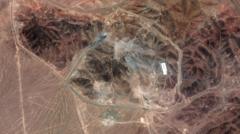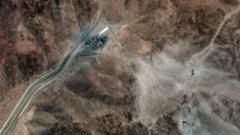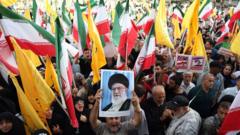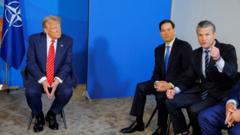After nearly two weeks in hiding due to fears of assassination, Iran's Supreme Leader, Ayatollah Khamenei, reemerges to an altered nation with escalating internal dissent and damaged military capabilities as the effects of war with Israel take their toll.
Iran's Supreme Leader Faces a Changed Landscape After Two Weeks in Hiding
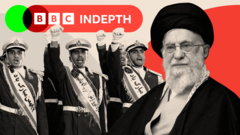
Iran's Supreme Leader Faces a Changed Landscape After Two Weeks in Hiding
Ayatollah Ali Khamenei emerges from seclusion amid an uncertain future as dissent grows in wake of Israel's assaults on Iranian military strength.
After a prolonged absence marked by whispers of potential danger, Iran's Supreme Leader, Ayatollah Ali Khamenei, aged 86, may soon surface following a fragile ceasefire brokered by US President Donald Trump and Qatar's Emir. Holed up in secrecy for nearly two weeks amidst Israel’s aggressive campaign against Iranian military targets, Khamenei has reportedly maintained no contact even with high-ranking government officials due to assassination fears. His return, however, comes with the grim reality of a country deeply scarred by the conflict.
Upon emerging, Khamenei will encounter harrowing scenes of destruction and a populace that casts him in a shadow of blame for the havoc wrought upon the nation. Despite likely attempts to project an image of victory through state-controlled media, the impact of the war on Iran’s military infrastructure has left undeniable scars, with many reporting significant losses among the Revolutionary Guard and armed forces, alongside damage to nuclear facilities—with questions looming over the efficacy of his doctrine aimed at achieving nuclear capability.
Frustration with Khamenei’s leadership is palpable among Iranians, many of whom held him responsible for the deteriorating state of the country and its misguided ideological pursuits. His lengthy tenure since 1989 has seen the regimented suppression of dissent, but now murmurs for a change in leadership rise from within Iran's elite circles. Speculative discussions regarding reform and leadership changes signal growing displeasure, presenting a potential internal reckoning against a leader perceived as steering Iran into devastation.
The war elicited a unique reaction from the citizens of Iran, splitting their allegiance between a desire to defend their homeland and a strong disdain for the ruling regime. In spite of the turmoil, acts of solidarity emerged as communities banded together, yet many remain suspicious of external intervention in any potential regime change. This survivor mentality may yet lead to broader resentment against a regime that increasingly resorts to harsh measures against perceived threats, as evidenced by arbitrary arrests and executions linked to the conflict.
Visibility remains on the potential shift in power dynamics, with discussions of who might rise in Khamenei’s stead, particularly as distrust festers among the populace. As international observers express concerns surrounding Khamenei's enduring influence amidst deteriorating military capabilities, attention will also focus on Iran’s ongoing enrichment capabilities that may defy global watchfulness.
In what may be Khamenei’s final act of governance as a supreme authority, he finds himself navigating an increasingly hostile landscape, balancing a fractured regime with calls for change. The impending question for Iran centers around whether the slow, simmering anger of its people may converge into a reality capable of undermining his authority. As conflict with Israel persists on the horizon, one cannot ignore the risks of future instability as ideological divides and military realities collide within and beyond Iranian borders.




